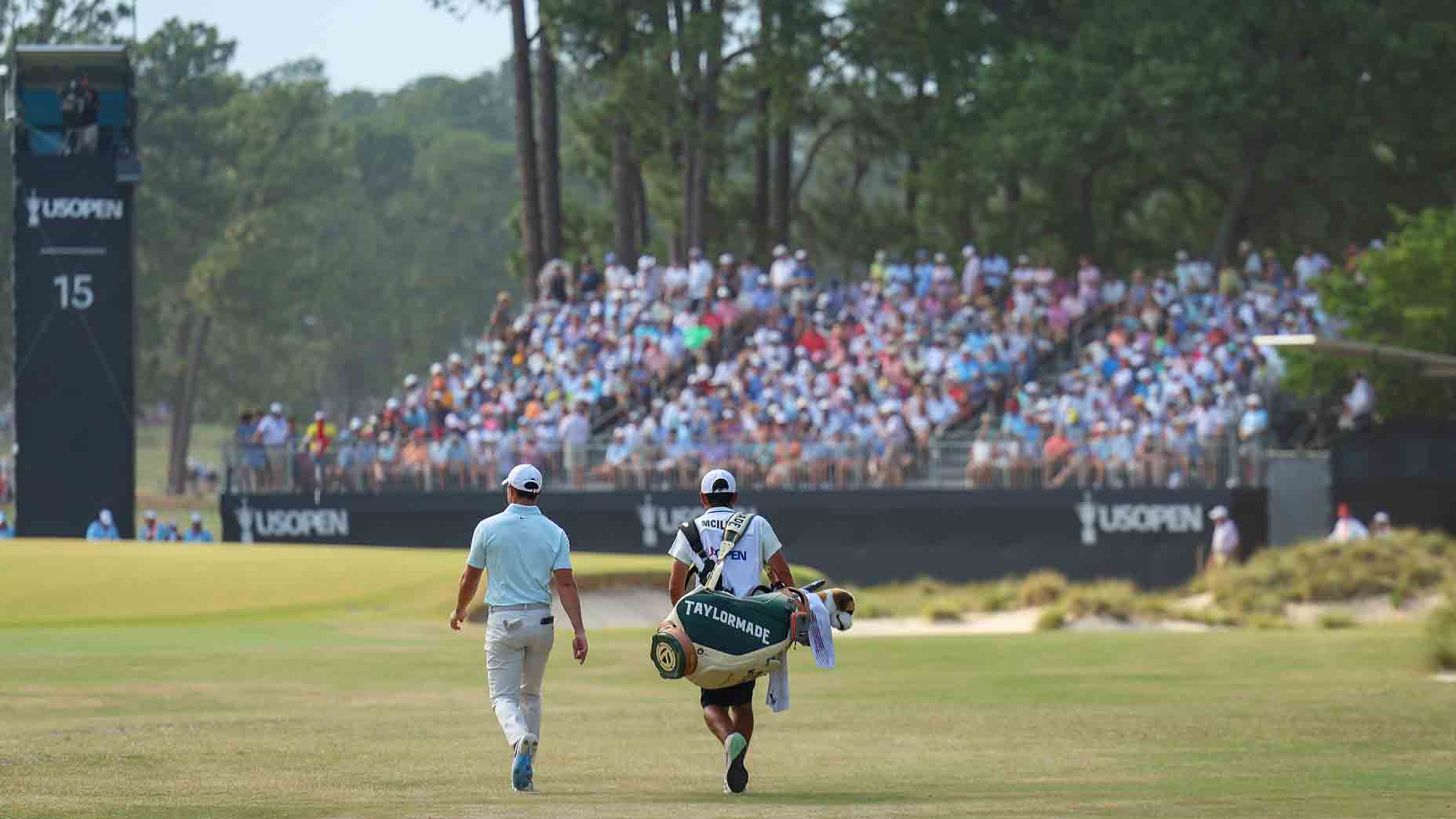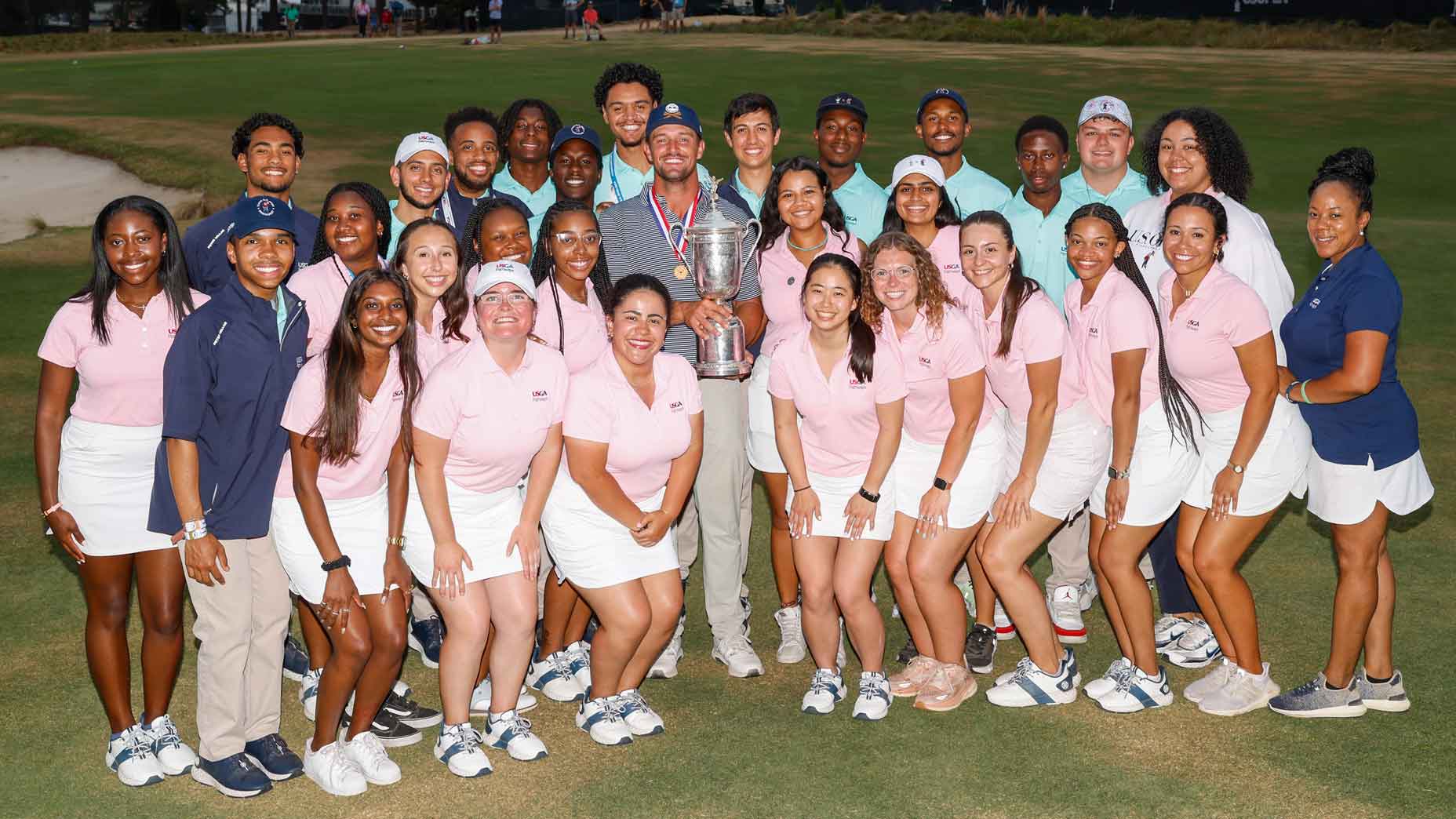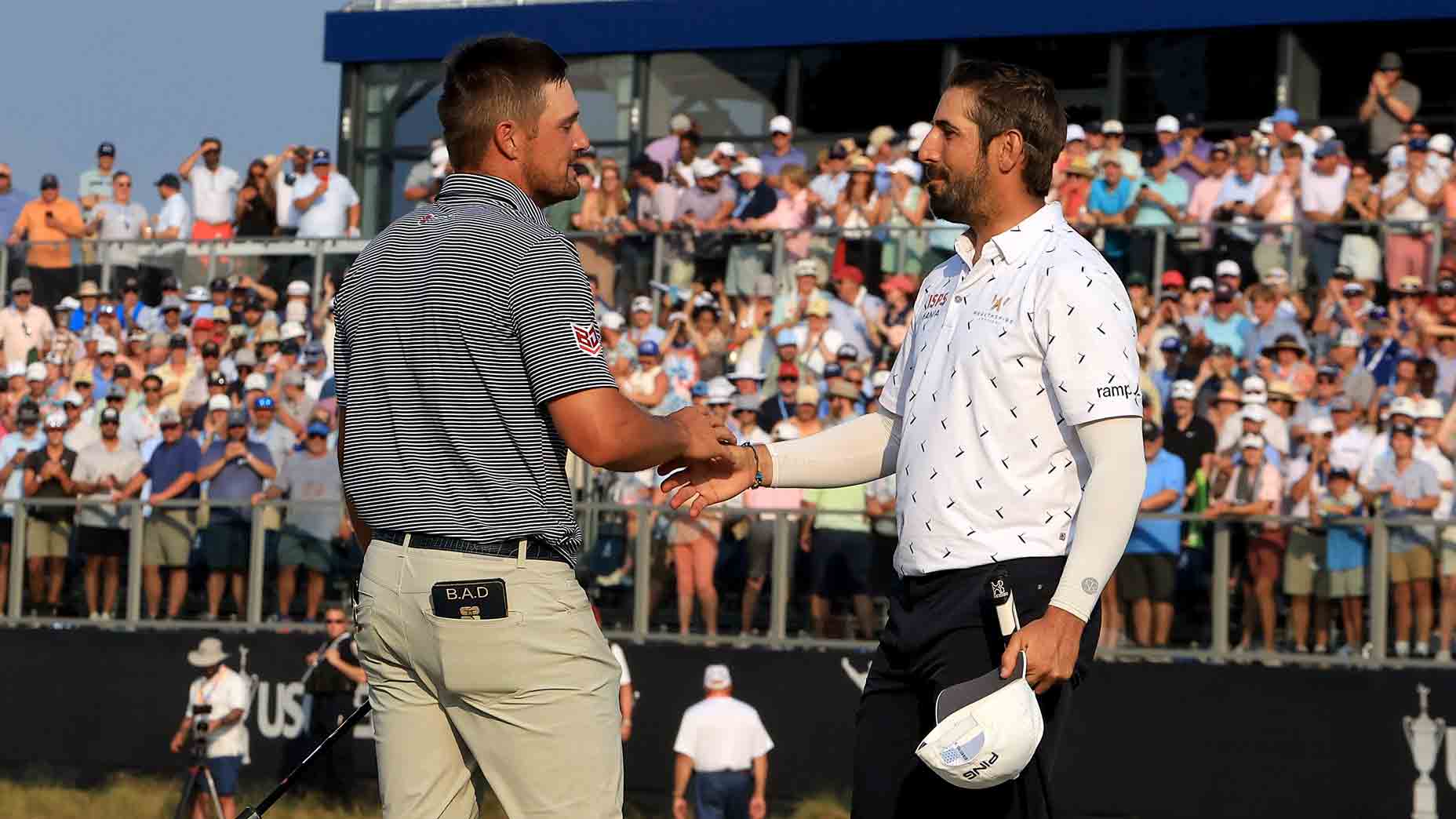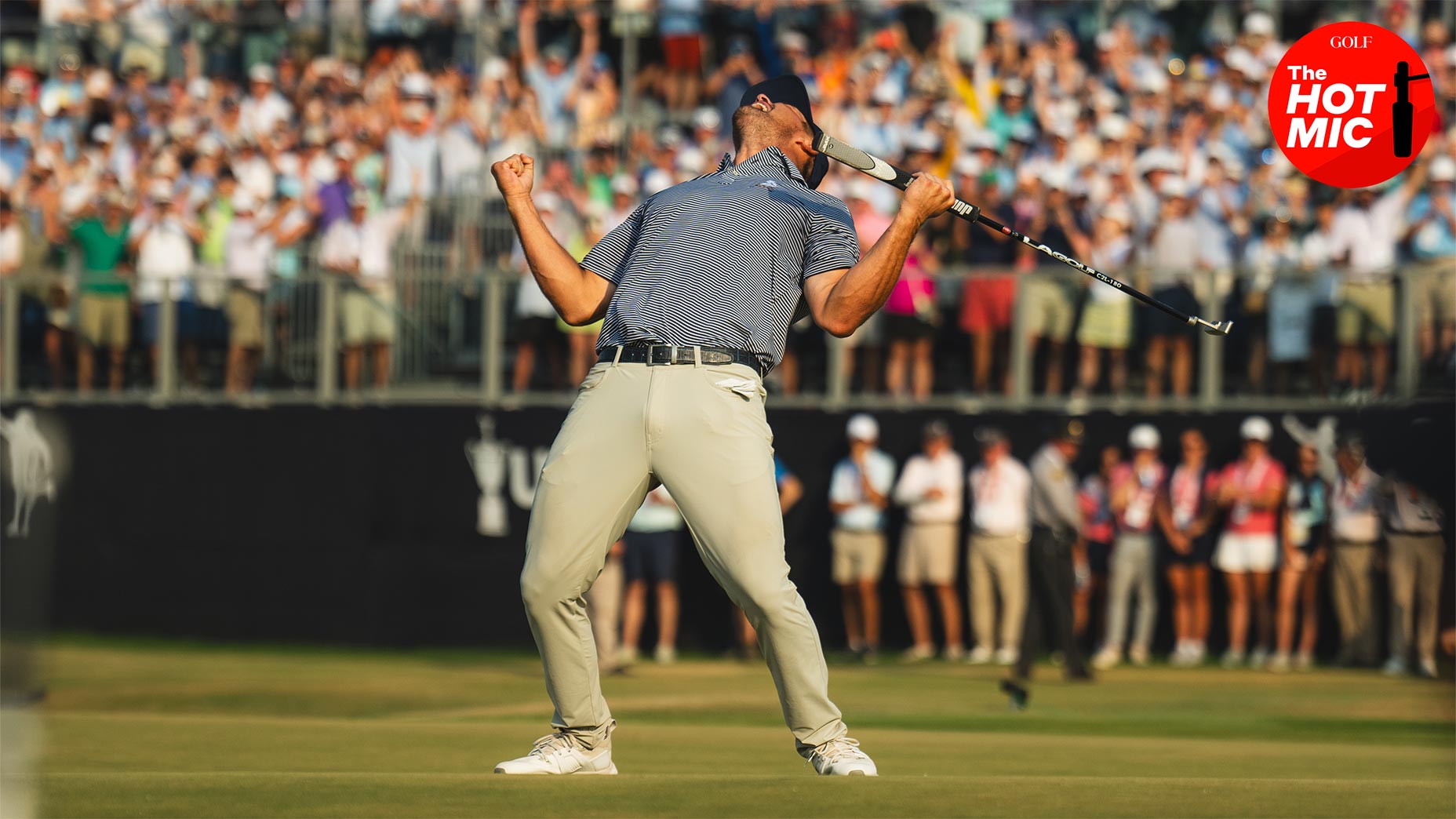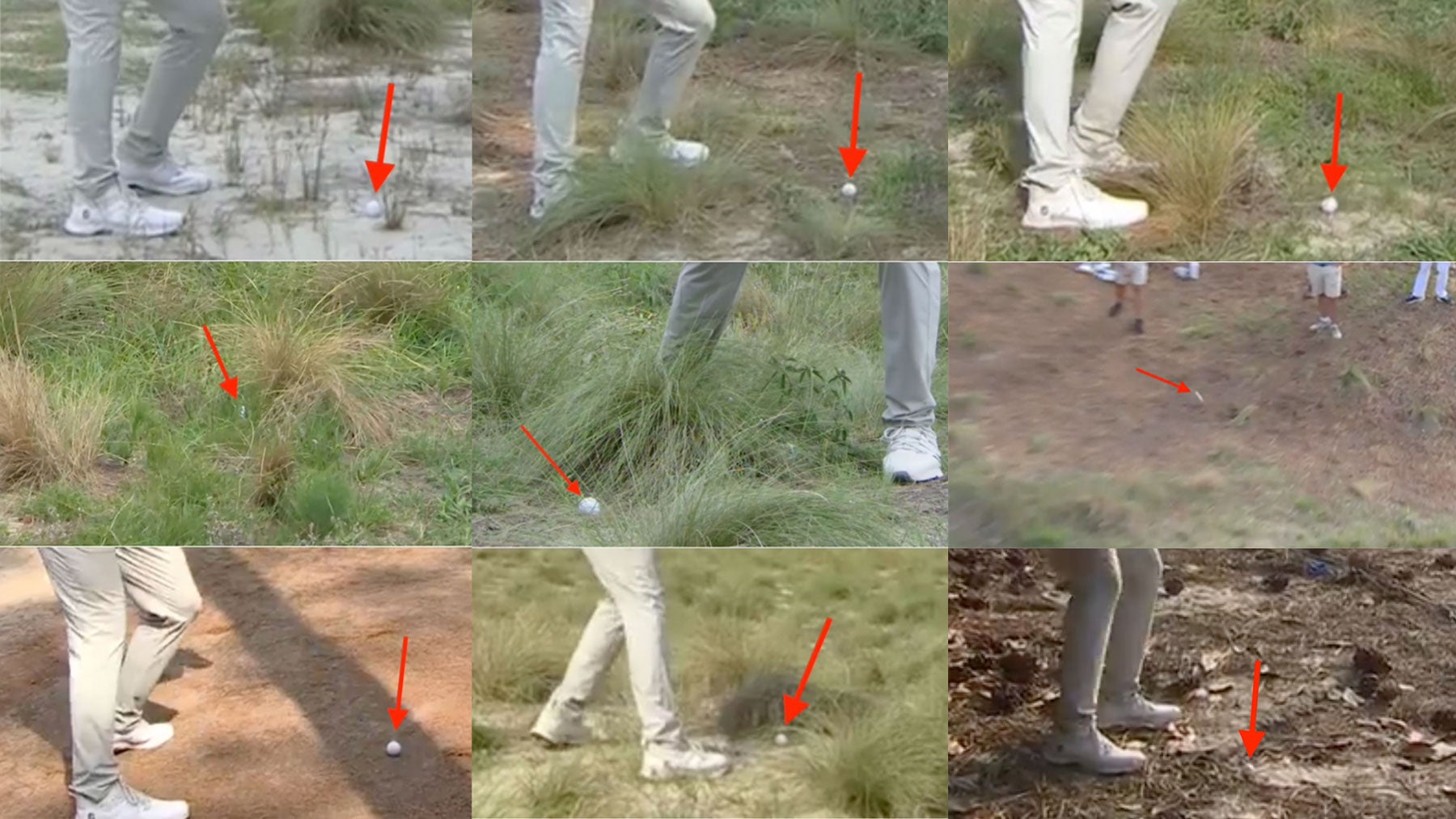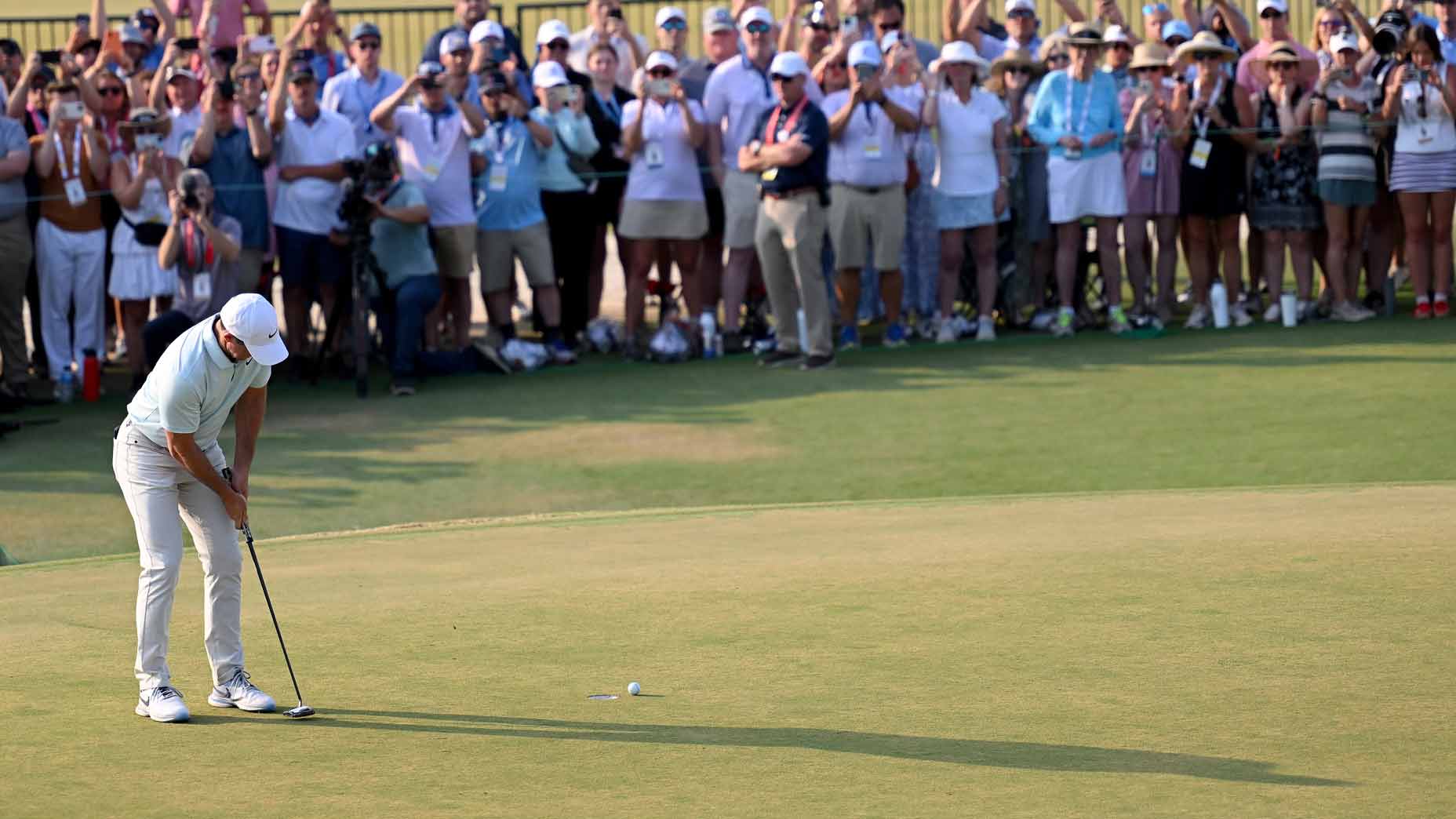With Jay Monahan’s sudden absence, the PGA Tour faces unprecedented questions
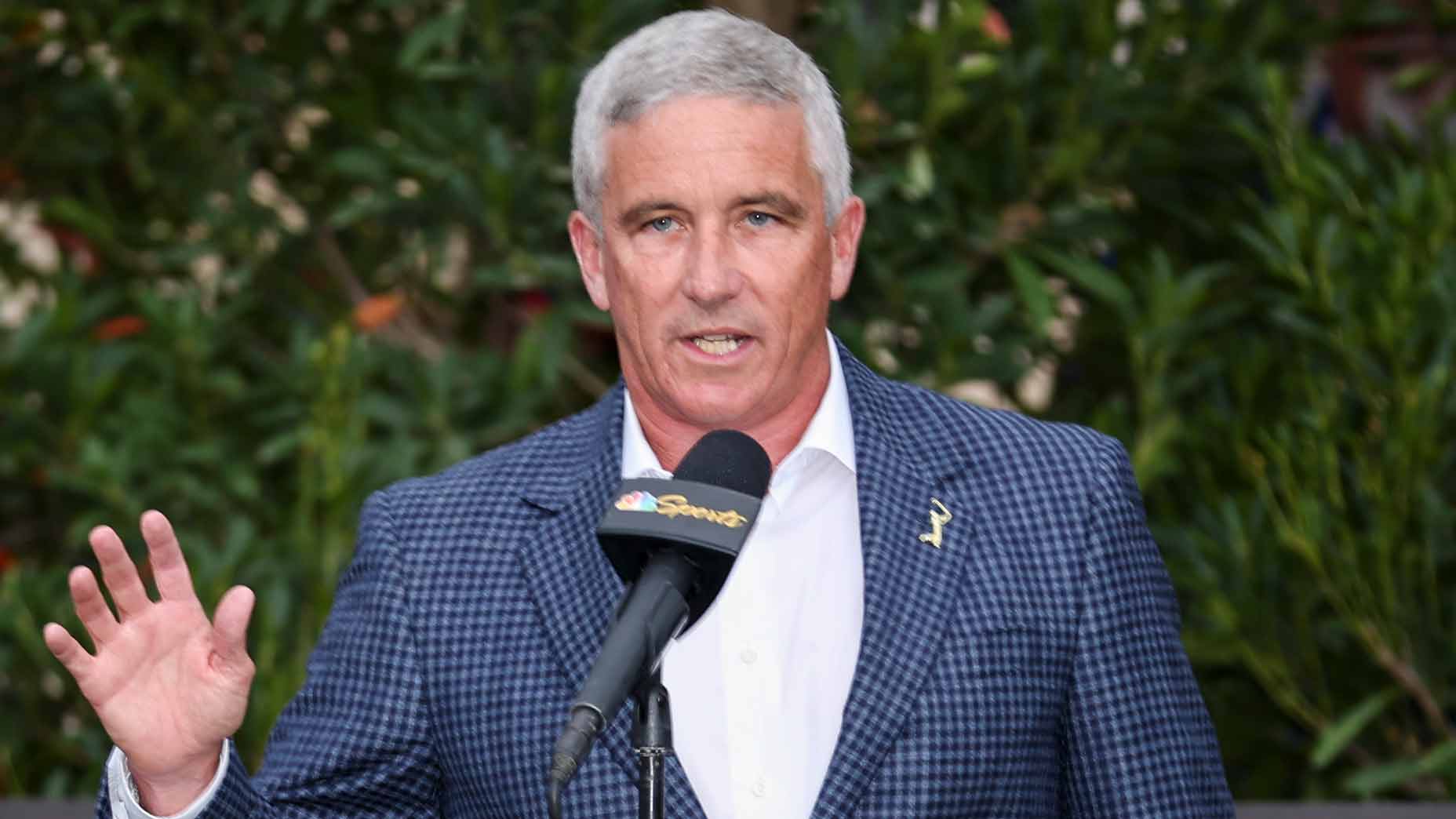
Jay Monahan is out with an undisclosed medical situation.
Getty Images
LOS ANGELES — USGA CEO Mike Whan began his Wednesday press conference with an overture to another of golf’s leaders.
“Before we get started I want to say to my friend and colleague, Jay — I hope you’re watching this, Jay — I hope you’re feeling better and just know that everybody at the USGA and everybody in the game of golf wishes you a speedy recovery.”
It was a thoughtful nod to the man who was the talk of the sports world Tuesday night: PGA Tour commissioner Jay Monahan was stepping away from his day-to-day duties due to an undisclosed “medical situation.”
The announcement marked the latest twist in a stunning seven-day news cycle that began last Tuesday with the Tour’s announcement about a framework agreement with the Saudi Public Investment Fund (and its property, LIV). Monahan’s absence would have been a big deal any week, but given the seriousness of the Tour’s upcoming decisions, this timing has even bigger ramifications for golf’s future.
The Tour already faces unprecedented questions — and now leadership is one of them. Let’s run through six of the biggest.
1. How long will Monahan be out?
I should start by saying that I don’t know the nature of the commissioner’s medical situation. I don’t know his current state nor his timetable for return. When contacted by GOLF.com, the Tour had no further comment. In an employee meeting Wednesday morning, Tour staffers weren’t given any additional information than what was already released. The natural order of things at golf tournaments is for the media to ask questions of the players, but on Wednesday it was the other way around, too. Have you heard anything about Jay? And sure, there were plenty of whispers about Monahan, but nothing concrete enough to print here.
We can infer a few things from the Tour’s statement, however, which ran as follows:
Jay Monahan informed the PGA TOUR Policy Board that he is recuperating from a medical situation. The Board fully supports Jay and appreciates everyone respecting his privacy. During Jay’s absence, Ron Price, Chief Operating Officer, and Tyler Dennis, Executive Vice President & President, PGA TOUR, will lead the day-to-day operations of the PGA TOUR with the assistance of the great team Jay has built, ensuring seamless continuity. We will provide further updates as appropriate.
My first learning: This is serious. Were it not serious, Monahan could have merely operated in the shadows while his deputies ran the show. Were it not serious, they wouldn’t have needed a statement to begin with. Were it not serious, the PGA Tour commissioner wouldn’t step away during a pivotal time for his league.
There was plenty of social-media speculation that it was part of some larger ploy to orchestrate Monahan’s departure from the Tour, but — like plenty of theories on social media — there wasn’t much evidence, either logical or circumstantial, to back that up. Monahan is expected to be a massive part of professional golf’s future, which means it’s significant if he isn’t a part of its present.
The uncertainty around Monahan’s condition and timeline fit into a theme for the week: There’s a lot of focus on things we don’t know much about.
2. What’s in this agreement, anyway?
I’ll reiterate that there’s a lot of focus on things we don’t know much about. Some players have attempted to shut the topic out altogether, surrendering to the uncertainty. Rory McIlroy remains involved behind the scenes but has gone mum on the subject and canceled his early-week press conference. Patrick Cantlay said he’s not saying much while he’s in the information-gathering phase, and you can be sure he means it. Jon Rahm said he contemplated throwing his phone in a drawer the day the news broke.
“There’s a lot of not-answered questions. It’s tough when it’s the week before a major. Trying not to think about it as much as possible,” he said.
Max Homa echoed that sentiment.
“My opinion is, I guess, ever-changing,” he said. “It’s actually nice to be as confused as I am here because I’m not really thinking about it anymore. I’m ready to just go play golf.”
Confusion reigned in the immediate aftermath of the announcement. Other feelings, too: the words “betrayal” and “distrust” were tossed around. But through conversations with interested parties it’s become slightly more clear what one version of the PIF-PGA Tour arrangement would look like.
According to Monahan’s comments, the release and sources familiar with discussions, the framework agreement would shift the commercial properties of the PGA Tour (a non-profit, until now) and DP World Tour plus LIV Golf into a new for-profit company. That company would then undergo an independent valuation. The company would have Monahan as its CEO and PIF governer Yasir al-Rumayyan as the chairman of its board, which would also include Monahan and the architects of the deal, Jimmy Dunne and Ed Herlihy. Following the valuation, the PIF would have the exclusive opportunity to invest in that company. Sources suggested that the PIF investment could consist of 20 to 25 percent of the new company, likely making their investment multiple billions of dollars.
There are a million complexities that come along with putting the agreement into place. But the deal’s fundamentals are actually relatively simple. In short, the Tour would gain financial stability, the PIF would gain a seat and a voice at pro golf’s most important table and both would reap the benefits of a lawsuit ceasefire. (That last part’s important.)
3. Who’s in charge?
Several initial reports described the arrangement as the Saudis “buying golf.” But it’s not quite so simple. Dunne has insisted that the agreement will have language in place clearly establishing that the Tour maintains control. That means maintaining a significant board majority, and it means the entity would be able to decide whether or not to accept additional investment from the PIF beyond its initial minority stake. The implication is also that, while al-Rumayyan will have input, he won’t be as involved in the day-to-day as he has been with LIV.
But because we haven’t seen any of this spelled out, the critical details remain understandably confusing. Does al-Rumayyan hold more power serving as chairman of the board than Monahan as CEO? And if the PIF suddenly decided it wanted more control, would the Tour really be able to stop them? We’ll need to know more before we can know more, but this will remain a central question of the deal until we do.
4. What happens to LIV?
If the deal happens, LIV would fall under control of the new company alongside the PGA Tour and DP World Tour. To hear Dunne describe it, Monahan would then have complete control over LIV’s future. And while Monahan has said he’d look at the best ways to incorporate team golf going forward, something would change in the dynamic between LIV and the Tour. It’s just not clear what or when. LIV will finish out the 2023 season, and the next question will be whether they play a similar schedule in 2024. According to Greg Norman, Dustin Johnson and Bryson DeChambeau, the organization is currently planning to do so. That makes sense given a lack of clear alternative on the table; it just feels subject to change.
Pros from both sides seemed eager to keep things civil at this week’s U.S. Open, where 15 LIV players are in the field. If there are penalties coming their way, after all, they’d like to introduce some goodwill to the process.
This is one area where Monahan’s absence has a particularly obvious effect: If he’s the one in control of LIV’s future and he’s away from his position for the foreseeable future, how does that affect the decision?
5. What happens to LIV players if they return to the PGA Tour?
There are two ways to handle a potential reintegration of LIV pros to the PGA Tour. Players and officials, including Rory McIlroy, have made it clear that pros who left shouldn’t be able to return without paying some sort of penalty. But there’s no question that pros who left will have an avenue back; that feels like a significant piece of the deal. Big-picture, that’s the whole point. At some point, there will be a committee that figures out how, when and by which conditions those players can return. That seems like a difficult thing to get right; I can’t think of any close equivalent in other sports.
Meanwhile, some players who stayed on the PGA Tour and turned down significant LIV money are hoping for some sort of remuneration. Here’s one exchange that speaks to that:
Q. Do you think players who stayed loyal should be rewarded for that?
Patrick Cantlay: “In a perfect world, yeah.”
Q. In the real world?
“I think the real answer is we’ll see. It hasn’t been decided yet.”
Nearly everything remains on the table. The Times reported on Wednesday that one version of the deal includes cash payments to players who stayed, including a “compensation fund” to make up for lost earnings. The fact the money would originate from the same source the Tour initially decried makes this a little complex, to say the least. But that’s far from a done deal, too. Speaking of which…
6. Will the deal go through?
Oh, boy — now I’m really out of my depth. But there are a few obvious hurdles between where we are and the finish line that don’t require any fancy legal analysis to identify.
The first is a vote. The PGA Tour policy board will meet to discuss the arrangement and, assuming they have some more specifics in place, hold a vote on the deal. Herlihy and Dunne are two of the five independent directors on the board, which also includes five players: McIlroy, Cantlay, Charley Hoffman, Peter Malnati and Webb Simpson.
But that vote seems like small potatoes when compared to an obstacle like the U.S. government. Various senators have expressed their dismay surrounding the deal and the Tour’s reversal of position on dealing with Saudi Arabia. And the Wall Street Journal reported on Thursday that the Department of Justice plans to review the arrangement, citing antitrust concerns.
That’s one obvious wrinkle to any deal struck between LIV and the PGA Tour: it’s tough to un-say what LIV has alleged about the Tour being anti-competitive and monopolistic. Still, reviewing the arrangement doesn’t mean torpedoing the arrangement. It’s just another regulatory hurdle.
The DOJ’s involvement could delay the deal, at the very least. That’s in keeping with a theme, because each question we’ve raised here (plus plenty more we haven’t) suggests delay, and delay, and delay. The framework agreement may have promised to change golf overnight, but the actual process of doing so hardly seems close to resolution.
Over the past week, players and officials have stressed just how few people — maybe five to seven — know the particulars of the deal. Now one of those people is on medical leave.
Which means any questions we have won’t be answered for a while.





